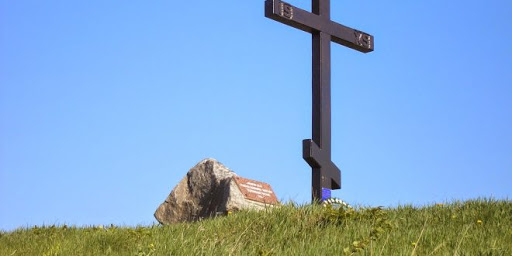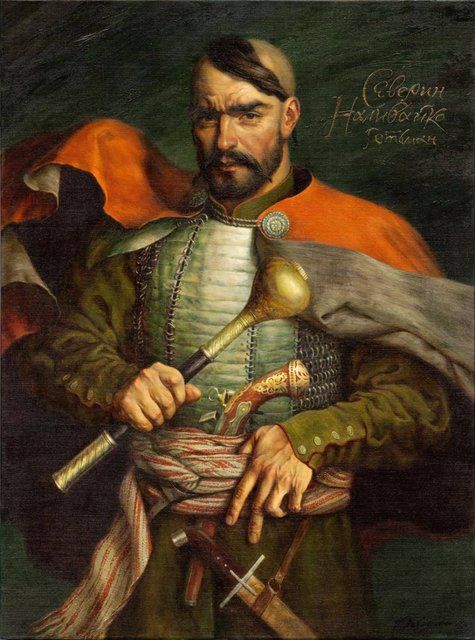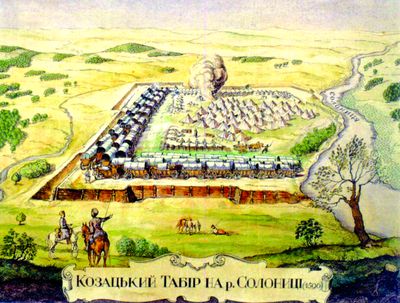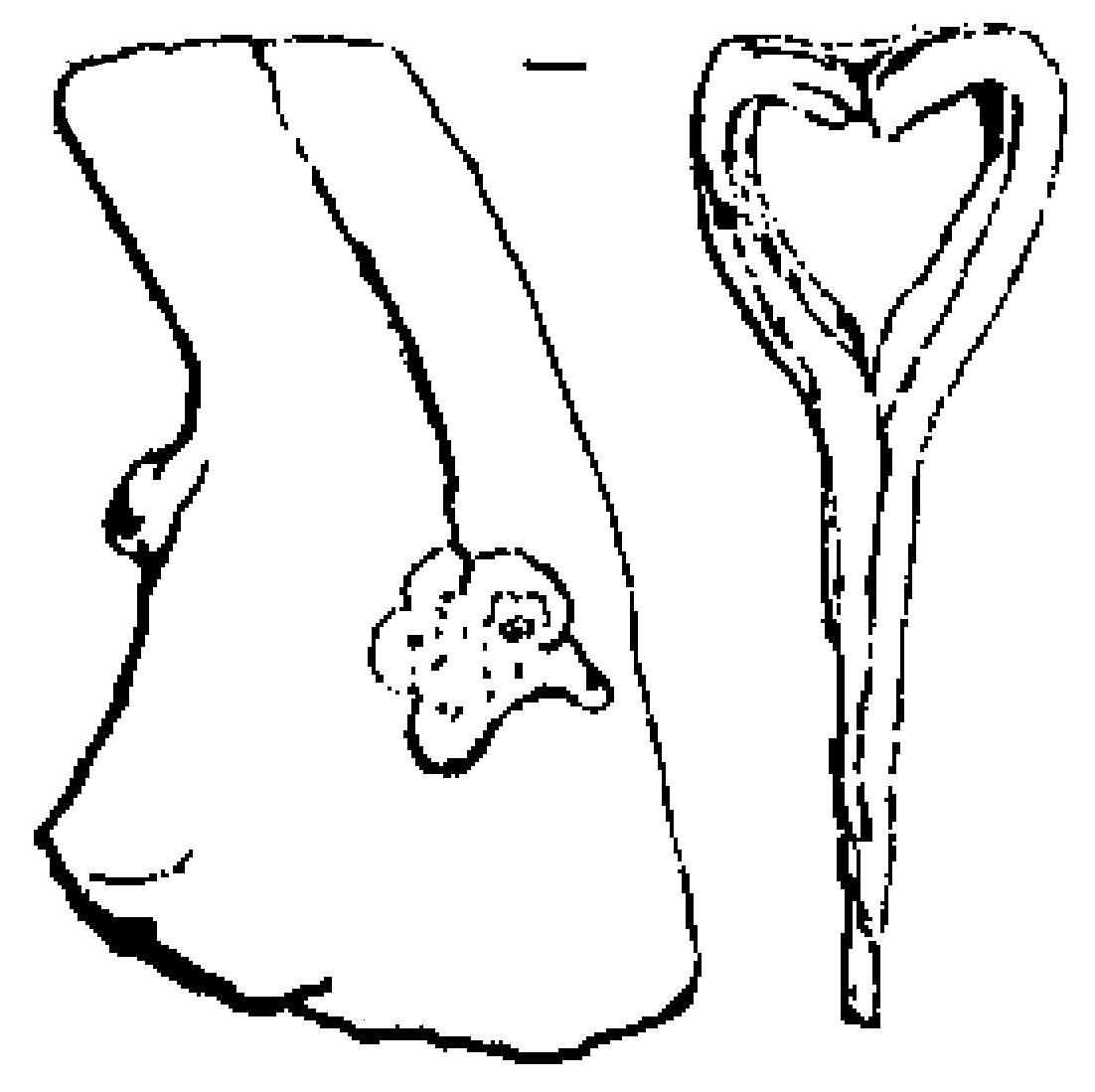
A Cossack cross and a stone with marble slab were installed not far from the bridge over the Sula River near Zasullia, on the bank near the Kyiv-Dovzhanskyi highway, with the following inscription: “To the Freedom Knights of Severyn Nalyvaiko – to the victims of the Solonytsia tragedy of 1596”. However, the location of the memorial has no link to the real place of this historical event, when near Lubny, above the Solonytsia River, the final act of the long Cossack-Peasant uprising of 1594-1596 took place, which raged mainly in the Right Bank Ukraine.
In mid-May 1596, a column of rebels led by Cossack leaders S. Nalyvaiko and H. Loboda, retreated from Pereiaslav to Oleksandriv (Lubny), overtook the advanced detached unit of the crown army led by the Polish Crown Hetman S. Zholkevskyi. The Cossacks managed to build a camp over the Solonytsia River, which, according to the description of the Polish leader in a letter to the king, was arranged “in a place quite well adapted, from which the neighbourhood was clearly visible on all sides”, surrounded by nine rows of carts (according to other sources – only four) and with the trenches.
The Cossack camp was also protected by a breastwork and special redoubt-type turrets for the guns. There were up to 12,000 people in the camp (half of them women and children). The crown army, which entered the Cossack camp on 22nd – 26th May 1596, numbered more than 6,000 battle-worthy soldiers. After several unsuccessful assault attempts, S Zholkevskyi proceeded to a systematic siege of the rebels, which lasted from 22nd – 24th May to 7th June. There was not enough food and water in the camp. The situation was complicated by internal conflicts among the rebels, provoked by the Polish hetman. As a result, the Cossacks executed H. Loboda on suspicion of treason.
On 5th -6th June 1596, the camp was shelled with heavy guns. The besieged agreed to surrender and extradited S. Nalyvaiko, M. Shaula and other officers, guns, flags and treasure. However, on 8 June, soldiers and szlachta (Polish gentry) attacked the Cossacks and committed a pogrom, the scale of which is contradictory in the sources. Some Cossacks, led by K. Krempskyi, still broke through to Zaporizhia, and the captured leaders of the rebels were taken to Warsaw and executed after severe tortures.
According to folklore, the Cossacks encamped on Lake Dovhyi near Turkachi village, three miles from Lubny. The description of fortification with the caption “Camp on the Solonytsia River in 1596” are widely known in the literature, where it is located on the right bank of the Sula River. At the time, T. Shevchenko, M. Kostomarov, I. Le (the author of the novel about Severin Nalyvaiko) tried to find the place of Cossack camp “in Solonytsia natural landmark”. But neither than nor later, the archaeological excavations were conducted. Archaeological excavations led by S. Lepiavko (1989), D. Telehin (1991-1992) and Yu. Morhunov (1991-1992) also failed. S. Lepiavko noted that no external signs of earthen structures in Solonytsia district have been preserved, and the name “Solonytsia” refers to a fairly large area along the Solonytsia River, Sukha Solonytsia River, and Lake Solonytsia.
Summing up the expedition in “Cossack Times” in 1991-1992, D. Telehin suggested that the Nalyvaiko camp located on Turchakiv Hill, questioning the authenticity of the famous drawing of the camp on Solonytsia, located by the artist on the right bank of the river. Yu. Morhunov, who studied the territory of Lubny region in 1991-1992, also claimed that there were no camp remains in this territory.
To date, with the exception of some findings of the Cossack era, made mostly by enthusiasts, the final localization of the site of the Solonytsia tragedy remains a goal for the future.
A Cossack cross and a stone with marble slab were installed not far from the bridge over the Sula River near Zasullia, on the bank near the Kyiv-Dovzhanskyi highway, with the following inscription: “To the Freedom Knights of Severyn Nalyvaiko – to the victims of the Solonytsia tragedy of 1596”. However, the location of the memorial has no link to the real place of this historical event, when near Lubny, above the Solonytsia River, the final act of the long Cossack-Peasant uprising of 1594-1596 took place, which raged mainly in the Right Bank Ukraine.
In mid-May 1596, a column of rebels led by Cossack leaders S. Nalyvaiko and H. Loboda, retreated from Pereiaslav to Oleksandriv (Lubny), overtook the advanced detached unit of the crown army led by the Polish Crown Hetman S. Zholkevskyi. The Cossacks managed to build a camp over the Solonytsia River, which, according to the description of the Polish leader in a letter to the king, was arranged “in a place quite well adapted, from which the neighbourhood was clearly visible on all sides”, surrounded by nine rows of carts (according to other sources – only four) and with the trenches.
The Cossack camp was also protected by a breastwork and special redoubt-type turrets for the guns. There were up to 12,000 people in the camp (half of them women and children). The crown army, which entered the Cossack camp on 22nd – 26th May 1596, numbered more than 6,000 battle-worthy soldiers. After several unsuccessful assault attempts, S Zholkevskyi proceeded to a systematic siege of the rebels, which lasted from 22nd – 24th May to 7th June. There was not enough food and water in the camp. The situation was complicated by internal conflicts among the rebels, provoked by the Polish hetman. As a result, the Cossacks executed H. Loboda on suspicion of treason.
On 5th -6th June 1596, the camp was shelled with heavy guns. The besieged agreed to surrender and extradited S. Nalyvaiko, M. Shaula and other officers, guns, flags and treasure. However, on 8 June, soldiers and szlachta (Polish gentry) attacked the Cossacks and committed a pogrom, the scale of which is contradictory in the sources. Some Cossacks, led by K. Krempskyi, still broke through to Zaporizhia, and the captured leaders of the rebels were taken to Warsaw and executed after severe tortures.
According to folklore, the Cossacks encamped on Lake Dovhyi near Turkachi village, three miles from Lubny. The description of fortification with the caption “Camp on the Solonytsia River in 1596” are widely known in the literature, where it is located on the right bank of the Sula River. At the time, T. Shevchenko, M. Kostomarov, I. Le (the author of the novel about Severin Nalyvaiko) tried to find the place of Cossack camp “in Solonytsia natural landmark”. But neither than nor later, the archaeological excavations were conducted. Archaeological excavations led by S. Lepiavko (1989), D. Telehin (1991-1992) and Yu. Morhunov (1991-1992) also failed. S. Lepiavko noted that no external signs of earthen structures in Solonytsia district have been preserved, and the name “Solonytsia” refers to a fairly large area along the Solonytsia River, Sukha Solonytsia River, and Lake Solonytsia.
Summing up the expedition in “Cossack Times” in 1991-1992, D. Telehin suggested that the Nalyvaiko camp located on Turchakiv Hill, questioning the authenticity of the famous drawing of the camp on Solonytsia, located by the artist on the right bank of the river. Yu. Morhunov, who studied the territory of Lubny region in 1991-1992, also claimed that there were no camp remains in this territory.
To date, with the exception of some findings of the Cossack era, made mostly by enthusiasts, the final localization of the site of the Solonytsia tragedy remains a goal for the future.
Read moreПам’яткоохоронна інформація
Monument protection information
Наукові публікації
Scientific publications
Фотогалерея
Gallery



